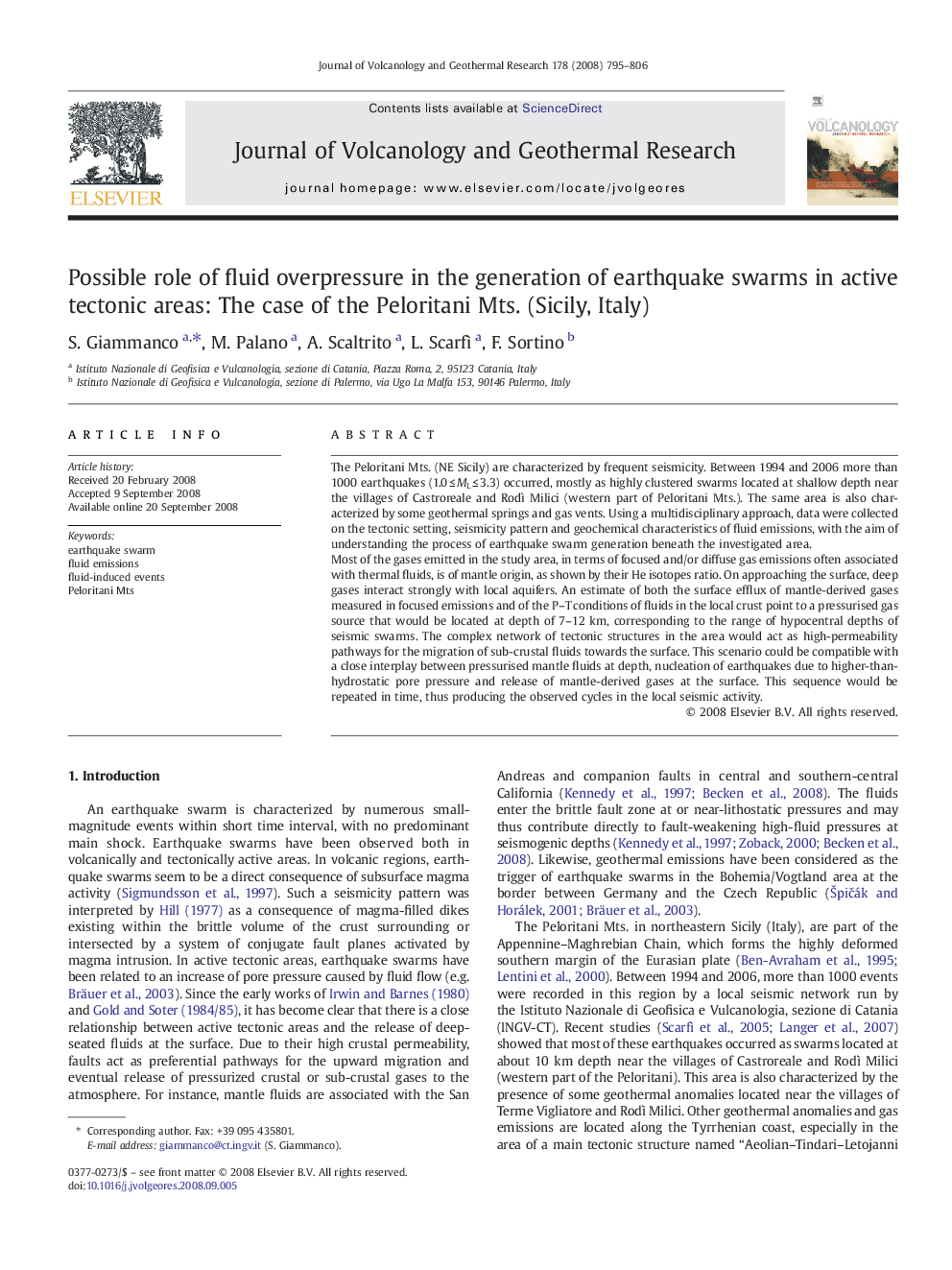| Article ID | Journal | Published Year | Pages | File Type |
|---|---|---|---|---|
| 4713376 | Journal of Volcanology and Geothermal Research | 2008 | 12 Pages |
The Peloritani Mts. (NE Sicily) are characterized by frequent seismicity. Between 1994 and 2006 more than 1000 earthquakes (1.0 ≤ ML ≤ 3.3) occurred, mostly as highly clustered swarms located at shallow depth near the villages of Castroreale and Rodì Milici (western part of Peloritani Mts.). The same area is also characterized by some geothermal springs and gas vents. Using a multidisciplinary approach, data were collected on the tectonic setting, seismicity pattern and geochemical characteristics of fluid emissions, with the aim of understanding the process of earthquake swarm generation beneath the investigated area.Most of the gases emitted in the study area, in terms of focused and/or diffuse gas emissions often associated with thermal fluids, is of mantle origin, as shown by their He isotopes ratio. On approaching the surface, deep gases interact strongly with local aquifers. An estimate of both the surface efflux of mantle-derived gases measured in focused emissions and of the P–T conditions of fluids in the local crust point to a pressurised gas source that would be located at depth of 7–12 km, corresponding to the range of hypocentral depths of seismic swarms. The complex network of tectonic structures in the area would act as high-permeability pathways for the migration of sub-crustal fluids towards the surface. This scenario could be compatible with a close interplay between pressurised mantle fluids at depth, nucleation of earthquakes due to higher-than-hydrostatic pore pressure and release of mantle-derived gases at the surface. This sequence would be repeated in time, thus producing the observed cycles in the local seismic activity.
